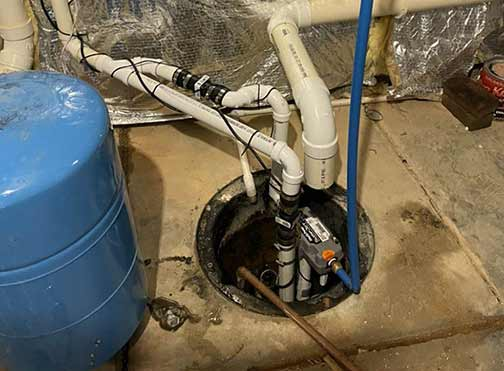
For most homes in Chicago, a sump pump is the most essential flood protection measure on the property. That’s because the self-operating quality of sump pumps allows homeowners to deploy them in their basements without needing to power them manually.
As long as a sump pump is well-maintained, connected to power, and there is no power outage in the area, homeowners can go to work, travel, or sleep without ever fearing a flooded basement. According to Cardinal Point Property Management, a working sump pump in your basement means peace of mind at all times.
But for this to happen, the sump pump must first be installed correctly. This initial step is where most homeowners’ sump pump issues begin. The method of sump pump installation influences its operation, lifespan, and how much work the owner has to do to maintain it.
What are the important steps to be aware of when installing a sump pump?
Factors to consider when installing a sump pump in your Chicago home
- Professional assessment
This helps you gain a fuller understanding of the issues in your home, to ensure that the solutions you deploy are not a waste of your money but address the real problems. That’s because basement flooding can result from different issues and is due to a range of factors.
There may be existing landscaping issues that predispose your home to flooding. If the area around your house is not properly graded or the soil is not porous enough to let rainwater percolate easily, there will be flooding issues in your home. Another problem is hydrostatic pressure.
Especially if you live in an area with a high water table, when that water table rises, hydrostatic pressure can force water to seep upwards into your basement. It is also possible for the water table in an area to increase slowly over the years, causing new drainage issues where none used to be.
Lastly, professional assessment before installing a sump pump ensures that the sump pump system you install has enough capacity to handle the volume of water that enters the basement. It also helps you decide if you need an additional solution, like a French drain alongside the sump pump.
- Proper sump pit placement
Typically, the sump pump should be located in the lowest spot in your basement. But sometimes it is not as simple as that. That’s because the lowest spot in your basement may also be too close to some of the critical systems in your home, such as an electrical panel, water heater, or furnace.
If this is the case, the impact of the sump system on these critical systems must be considered. In homes with radon mitigation systems, the location of a sump pit is critical. To mitigate some of these risks, additional measures such as covering and sealing the pit may be required.
- Choosing the right sump pump
Several things are taken into consideration when choosing a sump pump for your home. Firstly, sump pumps come in two broad categories: pedestal pumps and submersible pumps. The type of pump you choose will have implications for maintenance, noise levels, and cost.
The other things you want to look at when choosing a sump pump are the size and power of the pump. A larger pump will pump more water in a shorter time, but will use more power. An undersized pump will overflow and break down more often, resulting in higher maintenance costs.
- A backup sump pump system
Although it is not an absolute necessity, a battery-powered backup sump pump is strongly recommended. That is because a sump pump powered by the grid can leave your home unprotected if there is a power outage. Having a battery-powered sump system will protect you from this possibility.
When installing your backup system, in addition to having an independent power source, it should have a discharge pipe. This ensures that if your primary pump fails, maybe because the discharge pipe is frozen or the flooding is above its capacity, the backup system can help out.
- Think of maintenance
This is the second most important factor in the performance of your sump pump, after step one (professional assessment). Timely and adequate sump pump maintenance is how you prevent the myriad of problems that can impair the function of your sump pump or shorten its lifespan.
To maintain your sump pump, you must inspect and test it seasonally. You also need to be aware of the different types of sump pump problems, their causes and warning signs, as well as the steps to fix them. It is also essential to have a professional inspect your entire sump pump system annually.
Sump pumps are one of those systems in your home that you don’t want to fail at all, because such failures often come with a very heavy price tag. To ensure the efficient function of your sump pump all year round, you need a reliable professional to help you diagnose and fix your sump pump issues fast.

